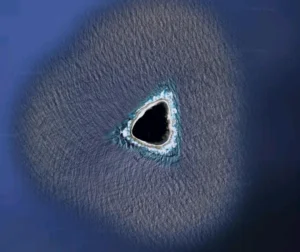Believe it or not, Svalbard, Norway has famously reliable internet — and has since 2003. The remote arctic archipelago sits almost 2,000km away from the mainland, at about 80˚N, but its nearly 3,000 residents have surfed the web for years, thanks to a network of fiber-optic cables that cover the distance underwater.
But sometime prior to the wee hours on January 7, something — or someone — cut one of the links. Now, Svalbard authorities undertake what could be a drawn-out investigation to find out what or who did it. According to Norway’s intelligence agency, blame could land on Russia.
Svalbard’s world-class internet takes a hit
Initially, multiple interest groups worked to establish the Svalbard Undersea Cable System to help the island’s satellite-receiving stations relay information to the mainland.
As soon as the switch flipped on, Svalbard’s population benefited distinctly. The island was among the world’s first to get a 4G network, and it’s been on 5G since 2019.
The connection runs through twin fiber-optic cables on the floor of the Norwegian Sea. The redundancy adds capacity, but also security. If one line goes down, the other simply continues to transmit.
Space Norway, the Norwegian Space Agency’s operational arm, now owns the system. At 4:10 am on January 7, it discovered a disconnection in one of the cables. It then traced the location to a precipice where the seafloor drops off dramatically from 300m to 2,700m.
Analyzing the situation, the organization decided to scale back non-essential activity until it could orchestrate a repair. Service remains online, but the limited capacity could last a while — Space Norway expects to begin repair work in February.
Possible causes: European authorities wary of Russia
Underwater fiber-optic cables commonly break, often by accident. Fishing gear or boat anchors are typical culprits, and their owners sometimes get held accountable in such cases.
However, the Norwegian Intelligence Service (NIS) reportedly stated in its annual threat assessment that Russia is developing the capacity to damage underwater pipelines and cables. Published in October, the document preceded comments by NIS Chief Nile Andreas Stensones in which he said Russia poses the “greatest threat” to the country in terms of cyberattacks.
British Defense Chief Sir Tony Radakin also recently alleged that Russian submarines pose an increasing threat to undersea communication cables.
It is, and likely will be, impossible to prove for quite some time whether Russia or Russian assets caused the damage. In the meantime, a host of other accidental causes threaten underwater pipelines and cables throughout the Arctic. In addition to fishing, icebergs and trawling can also damage cables.
Accidental incidents occur notably often. In one several-month period between 2018 and 2019, a fiber-optic cable between the Canadian mainland and Greenland broke three times. Two of the breakages were accidental, while the third remains unidentified.
For now, Svalbard locals can do their own research — albeit more slowly than they’re used to.






